Picking a camper lock can be a valuable skill, especially for outdoor enthusiasts who rely on campers and recreational vehicles (RVs) for their adventures. Whether you’ve accidentally locked yourself out or need to access your camper in an emergency, understanding the techniques of lock picking can come in handy. However, it’s crucial to note that lock picking should only be used for lawful and ethical purposes, such as regaining access to your own property.
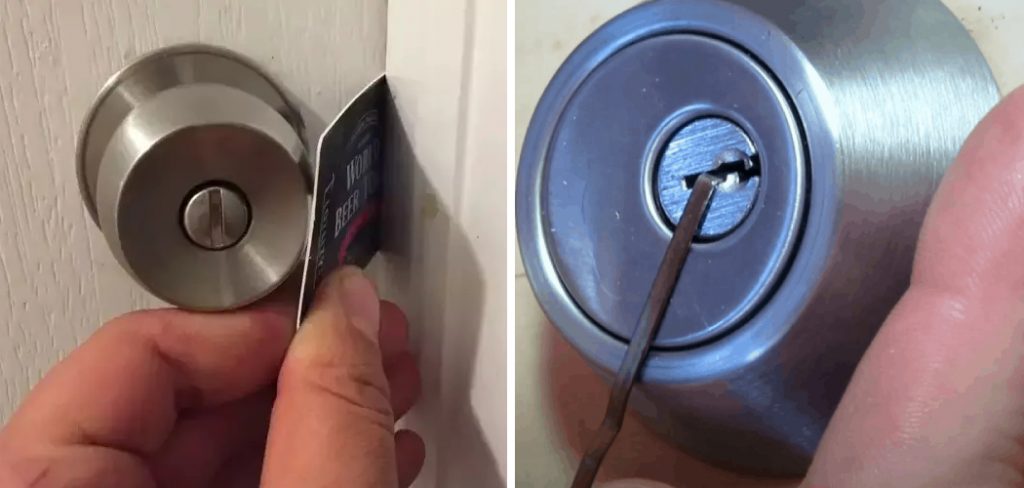
In this comprehensive guide, we will explore how to pick a camper lock step by step. From understanding the basics of lock mechanisms to employing the right tools and techniques, this article will provide you with the knowledge needed to unlock your camper safely and responsibly. Join us as we embark on this journey into the world of lock picking for camper locks, ensuring you have the skills to handle unexpected situations during your travels.
Understand What Kind of Locks You Have on Your Camper
Before you begin attempting to pick the lock on your camper, you should first identify what kind of locks are installed. There are three main types of camper locks: keyed entry, combination, and deadbolt. Keyed entry locks will have a keyhole with which you can insert a key in order to unlock the door. Combination locks require that you enter a code or combination in order to unlock them, and deadbolt locks use a metal bolt that slides into the door frame.
Once you have identified what kind of lock is installed on your camper, it is important to understand how each one works. Keyed entry locks are the easiest ones to pick as they typically have fewer security measures. Combination locks require a bit more knowledge as they require you to know the correct code or combination. Deadbolt locks are often considered the most secure, but that does not mean that they cannot be picked.
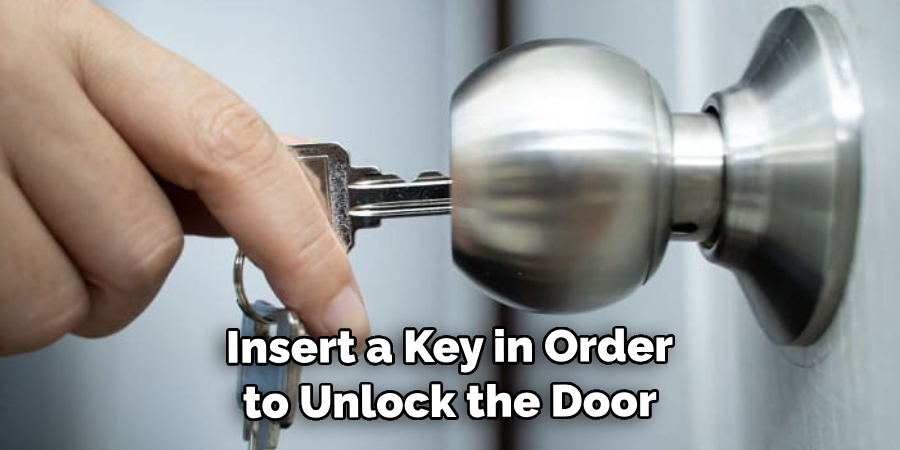
When it comes to picking your camper lock, it is important to understand what tools you will need for the job. For keyed entry locks, you will need a tension wrench and a pick. For combination locks, you will need the same tools plus a decoding tool. Finally, for deadbolt locks you will need a special type of tension wrench called a snap gun.
Differentiating between Types of Locks
When it comes to picking a camper lock, you should first determine the type of lock that is installed on your camper. There are several varieties of camper locks available, including combination locks, pin and tumbler locks, padlocks, and deadbolt locks. Each type requires specific tools for proper unlocking. Knowing the right type of lock to pick can save you a great deal of time and frustration.
Combination locks are becoming more popular for camper use as they eliminate the need for a key. These types of locks are generally opened by aligning the correct number sequence on the lock’s dial with its marking points. To pick this type of lock, you will need to use a tension wrench and a lock pick to manipulate the inner components of the lock.
Pin and tumbler locks are more complicated than combination locks, but they can still be picked. This type of camper lock requires a special bump key set in order to access the internal mechanisms. These keys come in various types and sizes that allow you to adjust the lock’s pins with the correct tension and force.
Padlocks are one of the most common camper locks used today. They generally require a standard lock pick as well as a tension wrench to be picked. However, some padlocks may require additional picks or tools depending on their design. When picking a padlock, it is important to insert the picks into the keyway at the correct angle and with the right amount of pressure to access the internal components.
10 Steps How to Pick a Camper Lock
1. Gather the Necessary Tools
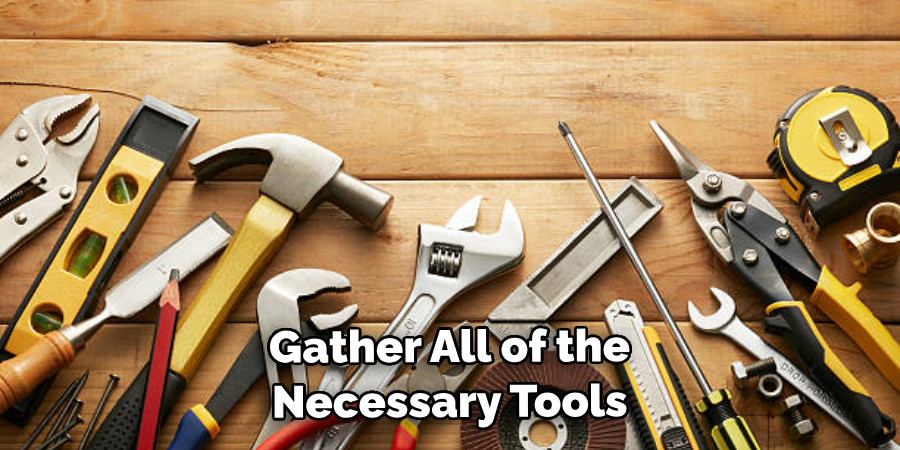
The first step in picking a camper lock is to gather all of the necessary tools. You will need a tension wrench, a pick set, and a flashlight. The tension wrench is used to apply torque to the lock cylinder while the pick set is used to manipulate the pins inside of the cylinder. Additionally, you may need a flashlight for better visibility if you are working in low-light conditions.
2. Insert the Tension Wrench
Once you have gathered all of your tools, insert the tension wrench into the keyway of the camper lock. Make sure that it fits snugly and that it is firmly inserted into the keyway. Once it is in place, use your thumb and forefinger to apply steady pressure on the tension wrench in order to keep it in place.
3. Insert Pick Set
Now that your tension wrench is in place, insert your pick set into the keyway as well. Use your other hand to guide and maneuver your pick set around until you feel resistance from one of the pins inside of the lock cylinder. This indicates that you have found one of the pins and can begin manipulating them with your pick set.
4. Manipulate Pins
Once you have located a pin, use your pick set to carefully manipulate it up and down until it reaches its highest point within its chamber. As each pin reaches its highest point, move onto another pin until all of them are at their maximum height within their chambers. Be careful not to apply too much pressure or force as this could damage or break some of them which would make picking impossible without replacing any parts inside of the lock cylinder first.
5. Apply Pressure on Tension Wrench
Once all of your pins are at the highest point within their chambers, apply slight pressure on your tension wrench while keeping them at their maximum height with your pick set simultaneously. If done correctly, this should cause all of them to move slightly downward which will allow them to clear out from their chambers when they reach a certain depth. If you do not feel any movement, try applying more pressure on both tools until you do.
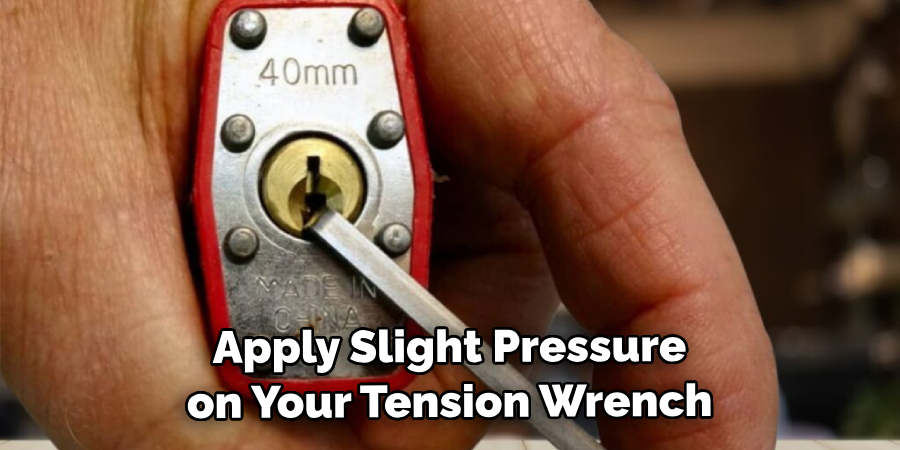
6. Rotate Cylinder
If all goes well, rotating your tension wrench should now cause all of your pins to clear out from their chambers allowing for smooth rotation inside of the lock cylinder. As soon as this happens, rotate your tension wrench clockwise slowly until you feel resistance indicating that it has reached its correct position.
7. Remove Pick Set & Tension Wrench
Once you have reached this point, remove both tools from inside of the lock cylinder then attempt turning over its keyhole with an appropriate-sized flathead screwdriver or similar tool. If successful, this should unlock your camper’s door and allow access to its interior space.
8. Check For Resistance
Before attempting any further steps, always check for resistance when inserting either tool into or rotating around the camper’s lock cylinder as too much pressure could easily damage or break some internal components making unlocking impossible without replacing them first.
9. Repeat Steps Until Successful
If unsuccessful after following these steps once, repeat them again until successful as some locks may require multiple attempts before opening depending on how difficult they are designed by manufacturers for security purposes.
10. Replace Lock If Necessary
Finally, if after multiple attempts still unsuccessful, consider replacing your camper’s existing lock with another model if desired as some locks may simply be too difficult or complex for most people without having years’ worth of experience in picking locks professionally.
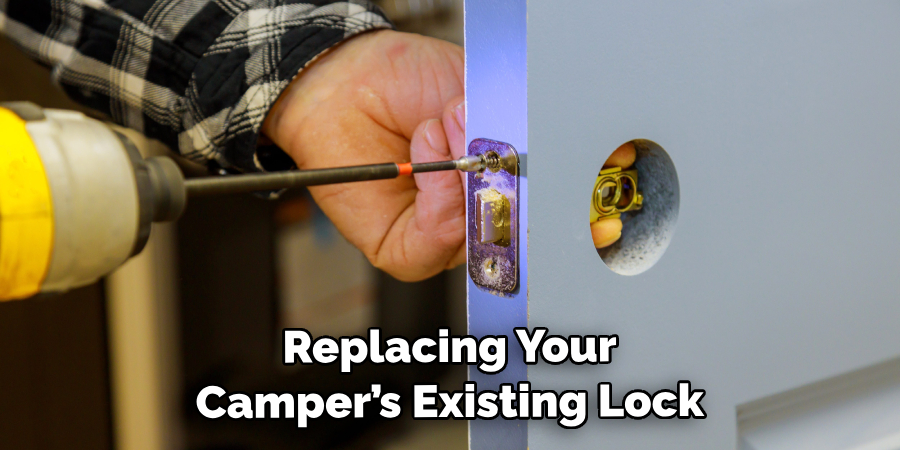
Things to Consider When Picking a Camper Lock
When it comes to choosing a lock for your camper, there are a few things you should consider.
First and foremost, make sure the lock you choose is compatible with your camper door. Different types of locks may require different sizes or shapes, so take this into account when selecting your lock.
It’s also important to consider the level of security you need for your camper door. Many locks come with a variety of features, such as built-in alarms or combination locks, that can help add an extra layer of security.
You should also consider the convenience factor when picking a camper lock. Look for locks that allow you to quickly access your camper without having to fumble around in your pocket for a key. Consider locks with built-in sensors that can detect when you’re nearby, allowing you to quickly and easily open the door without any hassle.
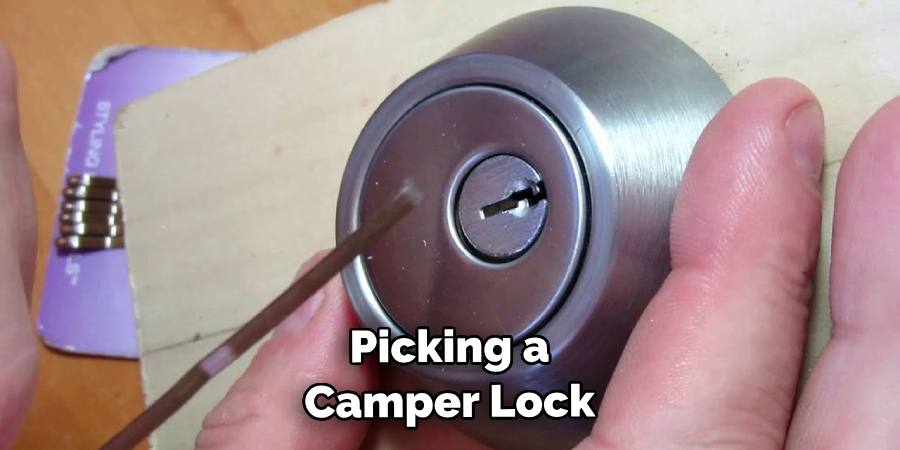
Conclusion
Picking a camper lock is a skill that takes patience and practice. Knowing the basic technique and having the right toolsmentallyhelp you become successful at unlocking any type of camper lock. While there are plenty of tutorials available online, practice makes perfect. Start off by trying to pick a few locks from friends and family until you become more confident in your skills before trying to unlock a lock you don’t actually own.
And just remember, if at first you don’t succeed, don’t give up – keep practicing until you’ve got it down pat! With enough time and dedication, anyone can learn how to pick a camper lock and never worry about getting locked out again. So what are you waiting for? Go ahead and give it a try yourself! You might just surprise yourself with how good you can get at unlocking different types of locks.
About
Safety Fic is a distinguished figure in the world of Diy design, with a decade of expertise creating innovative and sustainable Diy solutions. His professional focus lies in merging traditional craftsmanship with modern manufacturing techniques, fostering designs that are both practical and environmentally conscious. As the author of diy, Safety Fic delves into the art and science of Safety Fic-making, inspiring artisans and industry professionals alike.
Education RMIT University
(Melbourne, Australia) Associate Degree in Design (Safety Fic) Focus on sustainable design, industry-driven projects, and practical craftsmanship. Gained hands-on experience with traditional and digital manufacturing tools, such as CAD and CNC software.
Nottingham Trent University
(United Kingdom) Bachelor’s in diyfastly.com and Product Design (Honors) Specialized in product design with a focus on blending creativity with production techniques. Participated in industry projects, working with companies like John Lewis and Vitsoe to gain real-world insights.
Publications and Impact
In diy, Safety Fic his insights on indoor design processes, materials, and strategies for efficient production. His writing bridges the gap between artisan knowledge and modern industry needs, making it a must-read for both budding designers and seasoned professionals.
